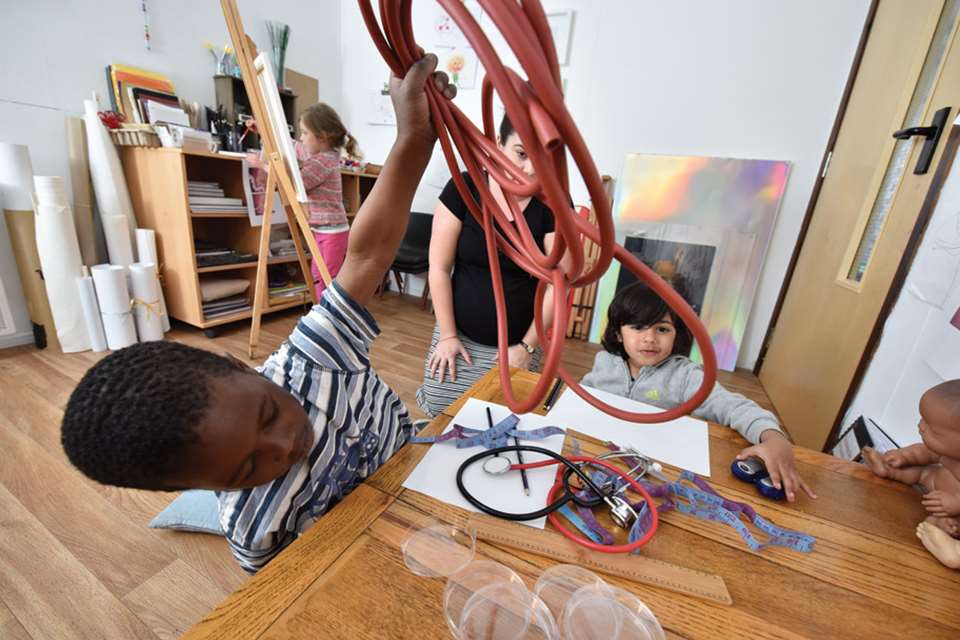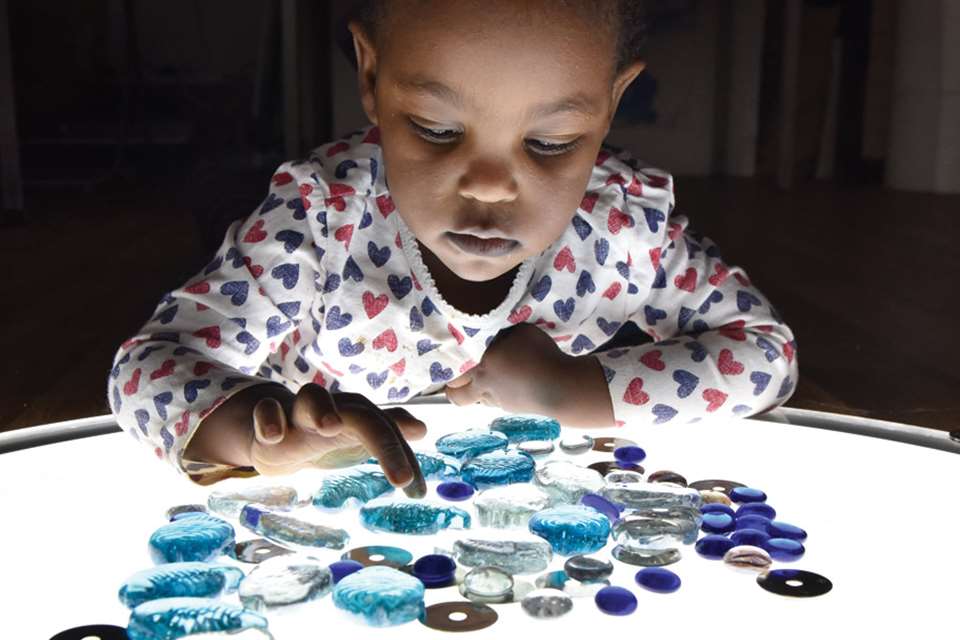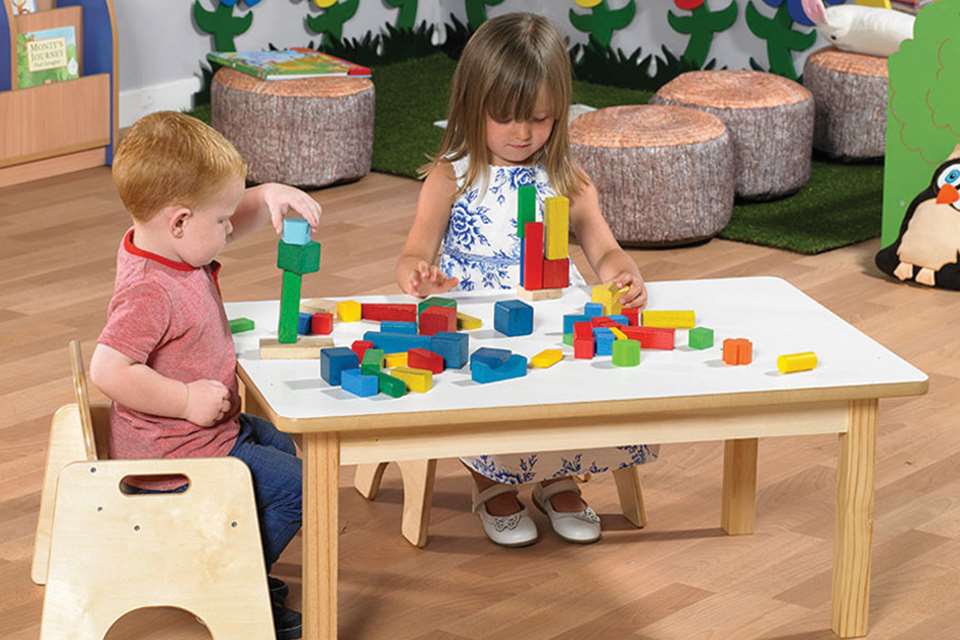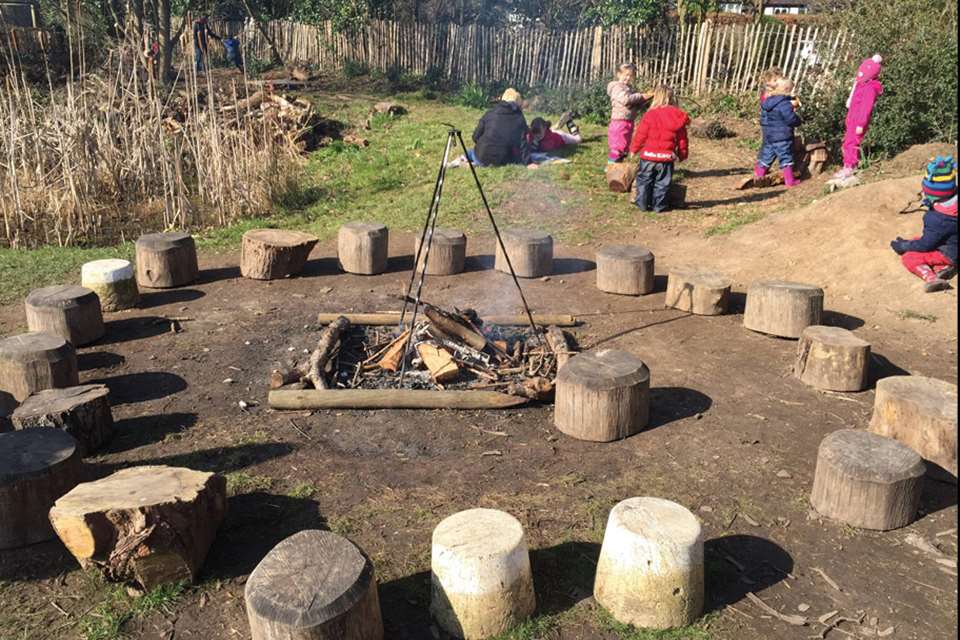Nursery Equipment: Introduction - New directions
Nicole Weinstein
Monday, May 16, 2016
A cross-section of early years consultants and nursery equipment suppliers tell Nicole Weinstein about the latest trends in early years practice and how best to provide an enabling environment

This year’s Nursery Equipment supplement examines the latest approaches to best practice and focuses on the resources you need to support this. While many practitioners are embracing the potential of loose parts and natural objects, there is clearly still a need for well-designed and robust products, including wheeled toys, sensory play materials, blocks, flexible furniture options and large items for outdoors.
In these pages we have talked to a cross-section of providers to highlight the latest trends, finding out how they are boosting their practice with thoughtful and innovative resourcing – whether this involves creating an art studio, developing forest school provision or working with two-year-olds.
But let’s begin with some insights and advice on how to equip from those in the know.
CAROLINE EATON, EARLY YEARS CONSULTANT
‘First and foremost, the most important element of an enabling environment is to have a teacher who reflects the characteristics of effective learning. So when it comes to buying new resources, practitioners need to be looking at what learning opportunities the individual items might offer. Resources will not fix everything – it’s the way they are used and the way the children are enabled to develop those ideas that count.
‘Fortunately, settings seem to be revisiting and reviewing their enabling environments – and looking at what opportunities children have to explore learning at a deeper, rather than on a superficial, level. There has been a rise in settings looking at developing their studio spaces, so that children can take part in deeper exploration.
‘Non-fixed equipment, such as water walls and mud kitchens, are still popular and are being developed. And plastic resources are continuing to be replaced with natural resources.’
KATHRYN SOLLY, EARLY YEARS CONSULTANT
‘There has been a move towards more natural, outdoor play through the use of mud kitchens and loose parts. This is good for children, good for sustainability and good for declining budgets. However, if folk do not understand the principles and pedagogy behind them or really how they can link them to children’s interests and motivations then they may sit unused in a cobweb-covered corner.
‘I’m increasingly seeing a range of faddy practitioner-made resources which are to be applauded when open-ended but concern me when they really pander to artificial, adult-led agendas. Some are very fancy, others just plain confusing.
‘I worry about the lack of access for young children to large construction blocks, ladders, wheeled toys, including bikes, and other larger-scale resources as budgets decline and premises are often “pack away” or in very restricted spaces.
‘Some of this may be linked to austerity, but it may also be linked to the fears of staff working with young children. Blocks can be used by creative, imaginative children to be anything. Vulnerable children, in particular, need access to a range of wheeled toys for numerous cross-curricular reasons, one being lack of access at home and elsewhere.’
JUDITH STEVENS, EARLY YEARS CONSULTANT
‘The time of plenty is past, budgets are tight and practitioners need to make decisions about purchases more carefully. Now, more than ever, it is essential to choose resources based on the needs and interests of children. Now is not the time for fads and fancies and one-off equipment that doesn’t stand the test of time.
‘Real-life resources are far more resilient than single-use items designed for just one thing. Home corners make more sense to young children when they are resourced with real pots and pans, washing-up bowls, tea cloths, dustpan and brushes and oven gloves, rather than plastic replicas.
‘It is also important to build up large collections of durable, open-ended resources which can be used in a variety of ways for many years. For example, the purchase of sets of high-quality blocks, such as the large hollow blocks, or the new outdoor “outlast” blocks from Community Playthings, is a decision never to be regretted.
‘Don’t forget to supplement commercial maths equipment with natural resources and collections to be explored and investigated – baskets filled with beads and bangles, odd socks, buttons and key rings offer as much, if not more, maths opportunities than any purchased “set” of plastic or wooden “sorting” objects.’
DAVID VINDEN, THE MATMAN
‘Sales of sensory resources have recently climbed and they are now among our biggest sellers. We’re talking about a very wide range of items – anything from reflective balls to larger items such as light tables. Nurseries like them because they can buy something and it can be used by different ages, in different ways. For example, squidgy sensory balls are great for the baby room but they can also be used for outdoor play by five-year-olds.
Meanwhile, nurseries are also expanding their ranges of electronic resources. And when it comes to furniture, plain wood colours throughout the provision are what everyone wants.’
WELTON CLEMENT, COMMUNITY PLAYTHINGS
‘In our experience, particularly in outdoor areas, the trend is towards loose parts and open-ended play. Many settings are looking for outdoor equipment that facilitates this. Fixed structures, while an important part of large muscle play, do not offer the level of imaginative open and co-operative play that many providers are looking for.
‘Many schools are using less fixed or installed equipment, storage and furniture and are looking for more flexible options to make better use of their space. Equipment that can be used in a variety of ways and in different locations within the nursery is popular.
‘For nursery chains, this offers additional flexibility by allowing them to move furniture as they close and open settings in different locations. An important part of this is that the equipment is durable enough to withstand this constantly changing nursery and school environment.
‘An additional driver for this is inclusion of children with varying degrees of ability and needs. Equipment needs to be versatile enough to allow settings to adapt to these children’s needs without highlighting their disability. Adjustable tables, calm colours and equipment that can be used to easily create flexible visual barriers are all important aspects.’
PETER ELLSE, COSY DIRECT
‘There’s increasing demand for loose parts, recycled materials and handmade artisan crafts from local suppliers. Examples of these low-carbon solutions include the Natural Mud Pie Tea Set and the Indoor Wicker Hideout, which are both handmade.
‘Most of the ideas for our resources come from the teachers themselves and our research is active, so our catalogue is full of resources that are in demand. For an example, see the Lift Up Log Bug Hotels, inspired by Camley Street Natural Park in London.
‘Nurseries that offer sustainable, free-flowing indoor and outdoor spaces are looking for furniture that provides flexibility and supports choice and independence in children’s play but, with cuts to budgets, doesn’t cost the earth.’
CAROLE MILLS AND CATHY GRIFFIN, YELLOW DOOR
‘We have seen an increased demand for resources for two-year-olds. Outdoor learning continues to be a popular theme, but our customers are becoming more discriminating in the search for resources that are genuinely fit for purpose in both these areas.
‘We hold regular focus groups with early years practitioners and they have increasingly talked about things that have disappointed in terms of durability and so, while cost remains important, they are looking rather more critically at value and are prepared to pay more for something that will stand the test of time.
‘That view is certainly backed up by the sales of our durable learning pebbles, which are engraved and painted so that they do not fade over time, and their accompanying activity resources printed on hard-wearing plastic are among our top-selling resources.’














